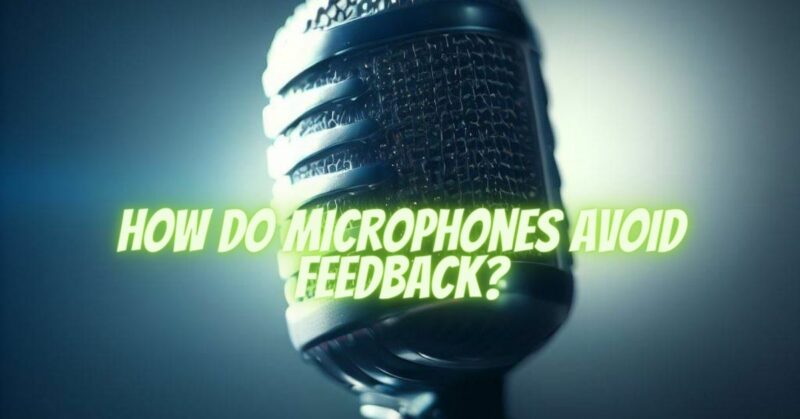Microphone feedback can be a frustrating and disruptive issue, particularly in live sound and public speaking scenarios. Feedback occurs when the sound from a speaker is picked up by the microphone and re-amplified, resulting in a loop that produces an unpleasant high-pitched squeal or howling sound. To prevent feedback, microphones employ various techniques and technologies. In this article, we will explore how microphones avoid feedback and the mechanisms behind these prevention techniques.
- Polar Patterns:
Microphones utilize different polar patterns to control the directionality of sound capture. The most common polar patterns include cardioid, supercardioid, and hypercardioid. These patterns are designed to focus on capturing sound from the front while minimizing pickup from the sides and rear. By selectively capturing sound from specific angles, microphones reduce the chances of picking up sound coming from the speakers and, consequently, minimize the potential for feedback.
- Off-Axis Rejection:
Off-axis rejection is a crucial aspect of microphone design that helps prevent feedback. Microphones are engineered to have reduced sensitivity to sound coming from the sides and rear, emphasizing sound capture from the front. This design feature allows the microphone to reject sound sources not directly in front of it, such as speakers or stage monitors, which helps prevent feedback from occurring.
- Internal Acoustic Filters:
Some microphones incorporate internal acoustic filters or baffles that reduce sensitivity to certain frequency ranges. These filters are designed to attenuate specific frequencies that are prone to feedback, such as high frequencies. By incorporating these filters, microphones can mitigate the potential for feedback by reducing the amplification of frequencies that are more likely to cause feedback issues.
- Feedback Suppression Technologies:
Certain microphones employ built-in feedback suppression technologies to actively monitor and control feedback. These technologies use algorithms and signal processing to identify frequencies at which feedback occurs and apply automatic attenuation or phase cancellation to suppress those frequencies. This real-time feedback detection and suppression allow the microphone to adapt and minimize feedback, even in challenging acoustic environments.
- Distance and Gain Management:
Proper distance and gain management play a vital role in preventing feedback. Microphones should be placed at an appropriate distance from speakers to reduce the likelihood of capturing sound directly from them. Additionally, careful gain staging ensures that the microphone signal is amplified appropriately without pushing it into a range where feedback is likely to occur. Balancing the gain structure of the audio system helps maintain a stable and feedback-free sound reinforcement setup.
- Sound Reinforcement System Design:
The overall design of the sound reinforcement system plays a significant role in feedback prevention. Proper loudspeaker placement, utilization of equalization techniques, and appropriate room acoustic treatments all contribute to minimizing the potential for feedback. Well-designed systems take into account room acoustics, speaker placement, and system configuration to create a more feedback-resistant environment.
Conclusion:
Microphones employ various techniques and technologies to avoid feedback. Polar patterns, off-axis rejection, internal acoustic filters, feedback suppression technologies, distance and gain management, and thoughtful sound reinforcement system design all work together to prevent feedback issues. By understanding these prevention techniques and implementing best practices in microphone usage, placement, and system design, you can ensure a more stable and feedback-free audio experience. Whether in live sound, recording, or public speaking scenarios, these techniques allow you to focus on delivering your message or performance without the interruption and distraction of feedback.


